LONDON – Kazakh female artists Aigana Gali and Gulnur Mukazhanova presented their artworks on the ancestral connection at the La Makan, Cosmic Corporeality exhibition in the Three Highgate Gallery in London on Sept. 19.
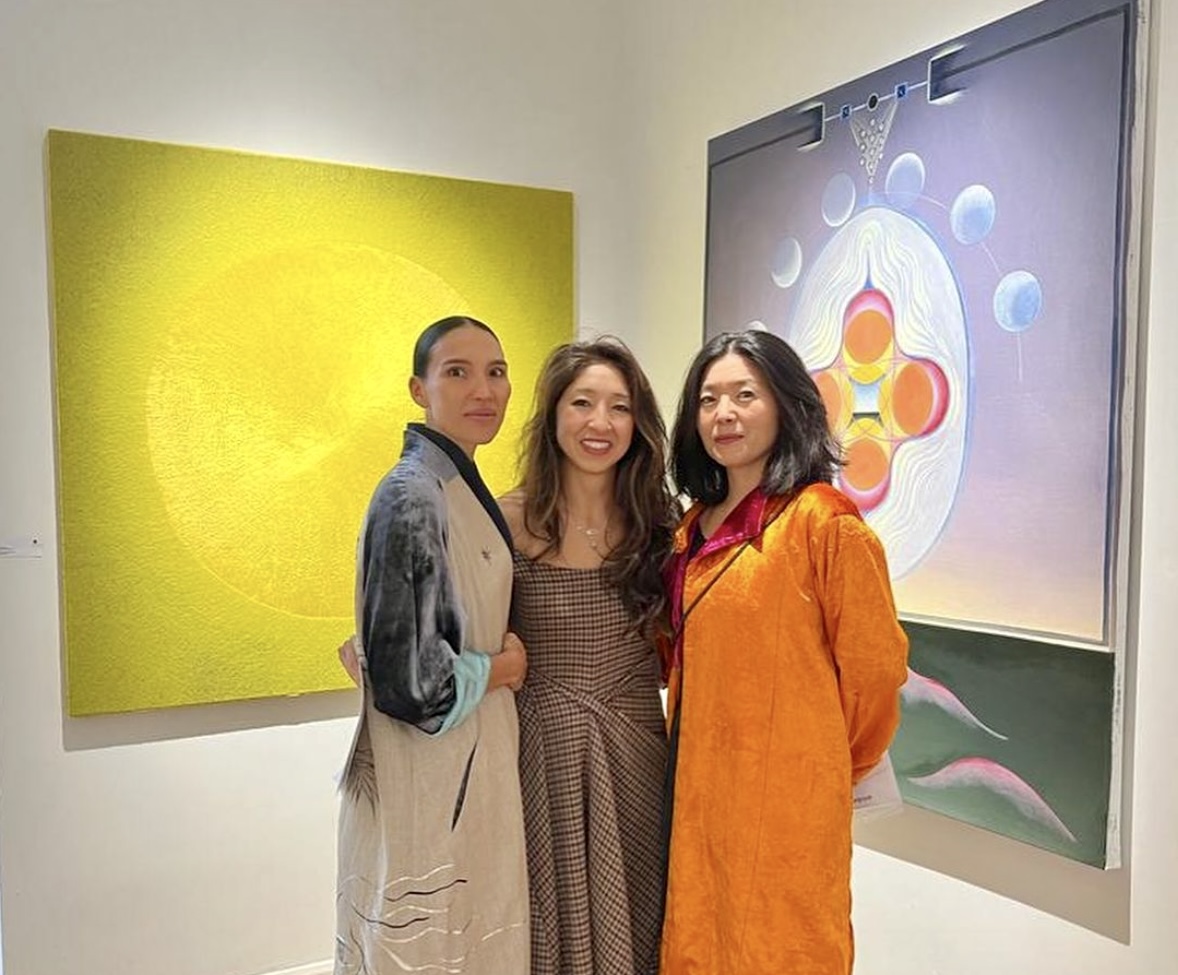
Aigana Gali, Indira Dyussebayeva-Ziyabek, and Gulnur Mukazhanova. Photo credit: Mukazhanova’s instagram.
The exhibition, which will last through Oct. 15, immerses the audience in the intertwined notions of life and death combined with the complexity of space, time, and reality. The art objects offer insights from philosophical, spiritual, and religious standpoints.
In an interview with The Astana Times, Mukazhanova said she is “deeply interested in the history of the ancestors and all that they went through – the struggle for life, for land, the right to live a decent life, as all these topics carry a great discourse to this day.”
To philosophize, in her opinion, means “to think, to reflect, to observe, to discuss, and to question things that excite.”
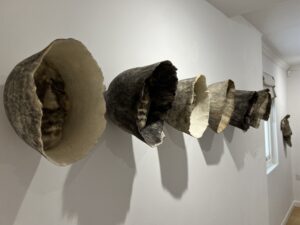
The bridging ties with ancestral spirits are clearly illustrated in Mukazhanova’s portal shape of works or in rectangular and circular details in Gali’s paintings. Photo credit: Photo credit: Dyussebayeva-Ziyabek.
“From the first meeting with Aigana in March 2022, I was fascinated by her and her works. Although we work in different media and forms, there is a special affinity that attracts us very much. It lies in our roots, our history, our ancestors, and our land! We felt each other’s energy. At an unconscious level, thoughts began to arise even at a distance,” said Mukazhanova.
The event was organized by the Ainalayin Space contemporary arts organization in London. Its art curator and founder Indira Dyussebayeva-Ziyabek has been working with contemporary art in Central Asia for 10 years through the AIDA (International Art Development Association) non-profit art organization with partners Laurent Lehmann and Dina Baitasova.
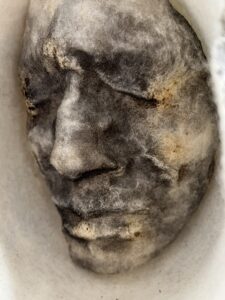
For Mukazhanova, it is the fourth time she presents her works in the British capital. Photo credit: Mukazhanova.
She said it all started with Kazakhstan’s private pavilion in Venice in 2013, referring to the One Step/pe Forward exhibition on the vastness of Kazakh steppes, Kazakhstan’s first contemporary art show in Venice. “We understood how much contemporary artists in Central Asia need support,” she added.
Established last January, the platform serves as an international art residency and delivers public learning programs in science, architecture, and literature.
“Ainalaiyn Space is only a year old, but we have already managed to cooperate with London-based art institutes, such as Mimosa House, Exposed Arts Projects, Hellenic Centre, or with the Greek Museum of Geological Formations of Meteora during the art residency,” said Dyussebayeva-Ziyabek.
Cosmos has played an important role in the daily life of Central Asian nomads.
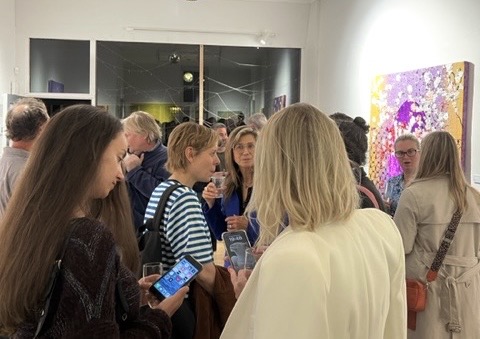
The opening of the event. Photo credit: Dyussebayeva-Ziyabek.
“People had to know the night sky and read it as a map to find directions. They had to follow the movements of the sun and moon, Earth and Jupiter to understand the changes and effects on nature. The philosophy of nomads was to be at one with nature, with the universe, which was reflected in their worldview,” reads the press release of the event.
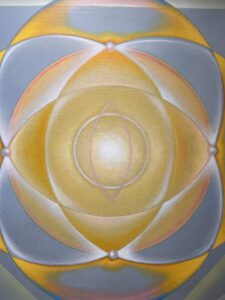
Gali’s work. Photo credit: Mukazhanova.
The term “la makan” represents an undefined place outside human perception of space and time. It was mentioned by Kazakh philosopher and poet Abai Kunanbaiuly in his best-known work “Kara Soz” (the Book of Words), a philosophic treatise of 45 reasonings (words). In his reflections on soul and body, he suggests that if the soul is immortal, the mind becomes eternal as well.

